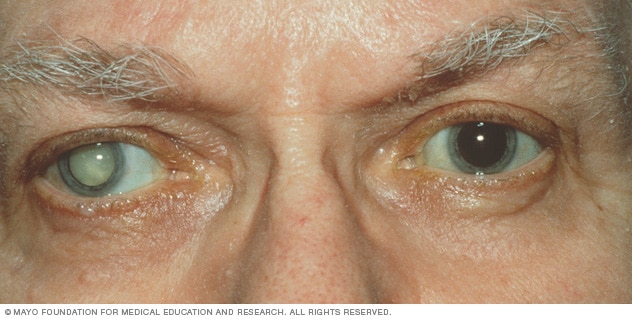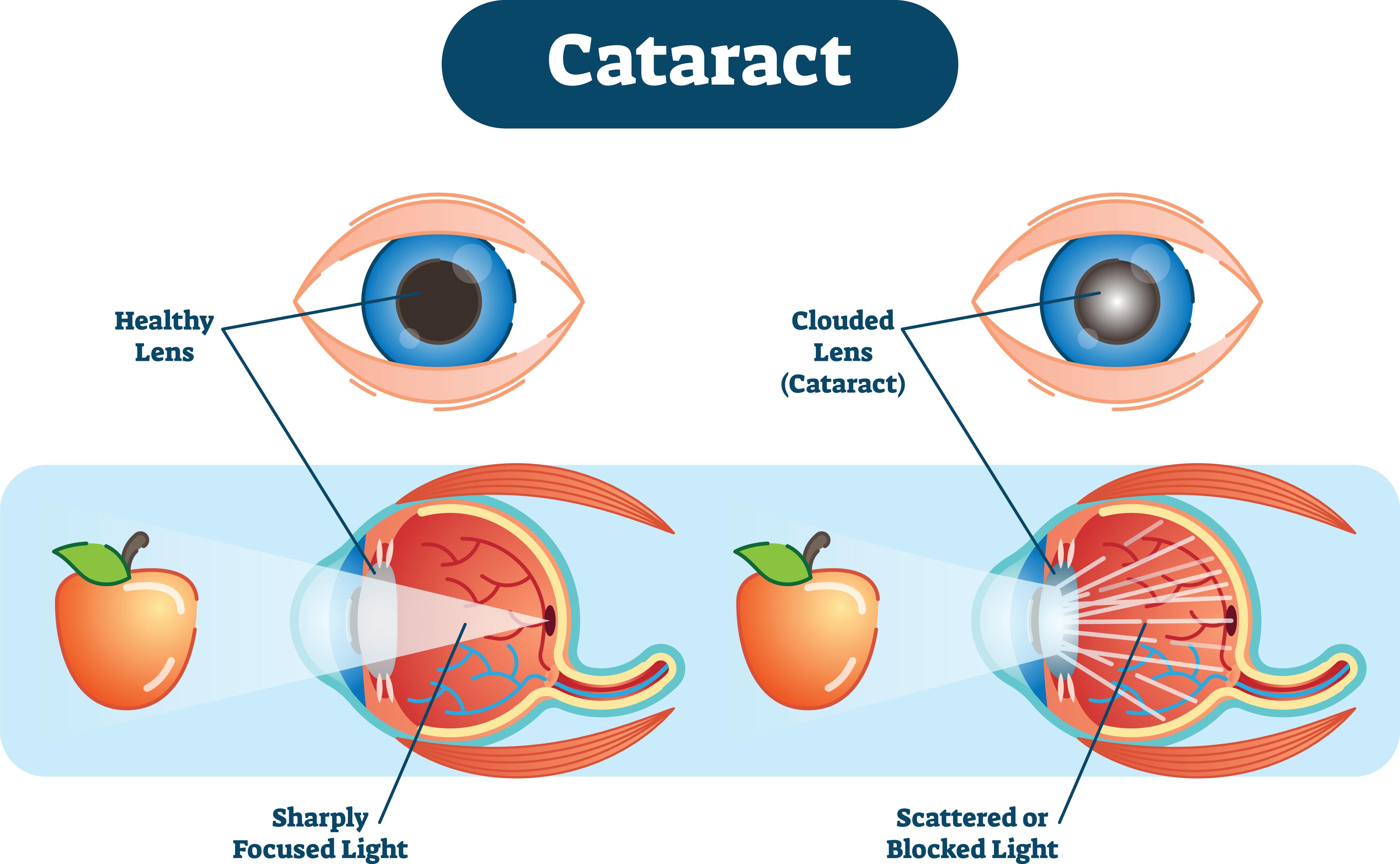Cataracts are a leading cause of vision impairment and blindness worldwide. They occur when the lens of the eye becomes cloudy, leading to a decrease in vision. This comprehensive guide will delve into the symptoms, causes, types, prevention strategies, and treatment options for cataracts, helping you understand this common eye condition and how to manage it effectively.
What Are Cataracts?
Cataracts are a clouding of the eye's natural lens, which lies behind the iris and the pupil. This condition can affect one or both eyes and often develops slowly over time. Cataracts can significantly impair vision, making everyday activities difficult and, in some cases, leading to blindness if left untreated.
Symptoms of Cataracts
Recognizing the symptoms of cataracts early can lead to prompt treatment and better outcomes. Here are the key symptoms to watch for:
- Blurred Vision: One of the most common symptoms is blurry or cloudy vision, as if looking through a fogged-up window.
- Difficulty with Night Vision: Cataracts can cause problems with seeing in low light conditions, making night driving particularly challenging.
- Sensitivity to Light: Increased sensitivity to bright lights and glare can occur, causing discomfort and difficulty seeing in well-lit environments.
- Halos Around Lights: Seeing halos or rings around lights, especially at night, is another common symptom.
- Double Vision in One Eye: Double vision or ghost images in one eye can be an indication of cataracts.
- Fading or Yellowing of Colors: Colors may appear less vibrant or yellowed as cataracts develop.
- Frequent Prescription Changes: Needing frequent updates to eyeglass or contact lens prescriptions can be a sign of worsening cataracts.
Causes of Cataracts
Understanding the causes of cataracts can help in taking preventive measures and understanding who is at risk. Here are some primary causes:
- Aging: Age-related cataracts are the most common type, developing gradually as part of the aging process.
- Genetics: A family history of cataracts can increase your risk.
- Medical Conditions: Conditions like diabetes can increase the likelihood of cataract formation.
- Eye Injuries: Trauma to the eye can lead to the development of cataracts.
- Radiation Exposure: Prolonged exposure to ultraviolet radiation from the sun or other sources can contribute to cataract formation.
- Medications: Long-term use of certain medications, such as corticosteroids, can increase the risk of cataracts.
- Smoking and Alcohol Use: Both smoking and excessive alcohol consumption are known risk factors.
- Nutritional Deficiencies: Lack of essential nutrients, particularly antioxidants like vitamins C and E, can contribute to cataract development.
Types of Cataracts
Cataracts can be classified into different types based on their location and development pattern. Here are the main types:
- Nuclear Cataracts: These cataracts form in the center of the lens and are associated with aging. They can cause the lens to become yellow or brown.
- Cortical Cataracts: These cataracts start as white, wedge-shaped opacities in the lens cortex, which surrounds the central nucleus. They gradually extend to the center of the lens.
- Posterior Subcapsular Cataracts: These cataracts form at the back of the lens. They can develop more quickly than other types and often cause more significant problems with reading vision, glare, and bright light.
- Congenital Cataracts: Some babies are born with cataracts or develop them during childhood. These cataracts may be due to genetic factors or intrauterine infections.
- Traumatic Cataracts: Cataracts that develop after an eye injury, sometimes years later.
- Secondary Cataracts: These cataracts can develop after surgery for other eye problems, such as glaucoma, or due to health conditions like diabetes.
First Sign of Cataracts
The first sign of cataracts is often a subtle change in vision. This can include:
- Mild Blurriness: Initially, you may notice a slight blurring of vision, which can be mistaken for needing new glasses.
- Increased Glare: Lights may seem overly bright or glaring, particularly at night.
- Colors Appear Dull: You might start to notice that colors seem less vivid or slightly yellowed.
These early signs can be easily overlooked, especially since they progress slowly. Regular eye check-ups are essential to catch cataracts in their early stages.
What Does Vision Look Like with Cataracts?
Cataracts affect vision in several ways:
- Cloudy Vision: Vision becomes progressively cloudier, akin to looking through a fogged-up or frosted window.
- Faded Colors: Colors lose their vibrancy and appear dull or washed out.
- Halos and Glare: Bright lights can cause halos and glare, making it difficult to see at night or in bright conditions.
- Double Vision: In some cases, cataracts can cause double vision or multiple images in one eye.
- Frequent Prescription Changes: As cataracts progress, frequent changes to your eyeglass or contact lens prescription may be needed.
How to Prevent Cataracts
While not all cataracts can be prevented, there are several steps you can take to reduce your risk:
- Regular Eye Exams: Routine eye exams can help detect cataracts and other eye conditions early. Adults over 60 should have annual eye exams.
- Protect Your Eyes from UV Rays: Wearing sunglasses that block 100% of UVA and UVB rays can help protect your eyes from the harmful effects of ultraviolet radiation.
- Maintain a Healthy Diet: Eating a diet rich in fruits and vegetables, particularly those high in antioxidants, can support eye health. Leafy greens, carrots, and citrus fruits are especially beneficial.
- Quit Smoking: Smoking cessation reduces your risk of developing cataracts and other eye diseases.
- Limit Alcohol Consumption: Reducing alcohol intake can help lower your risk of cataracts.
- Manage Health Conditions: Proper management of conditions like diabetes is crucial in preventing cataract formation.
- Avoid Eye Injuries: Use protective eyewear during activities that pose a risk of eye injury.
Treatment for Cataracts
When cataracts begin to interfere with daily activities, surgery is the most effective treatment. Here are the main aspects of cataract treatment:
- Early Stage Management: In the early stages, vision can often be improved with stronger eyeglasses, magnifying lenses, or better lighting.
- Cataract Surgery: When cataracts significantly impair vision, surgery is necessary. Cataract surgery is one of the most common and successful procedures performed worldwide. It involves removing the cloudy lens and replacing it with an artificial intraocular lens (IOL).
Types of Cataract Surgery
There are several types of cataract surgery available:
- Phacoemulsification: The most common method, using ultrasound waves to break up the lens for removal. It involves a small incision, and the recovery time is typically short.
- Extracapsular Cataract Extraction (ECCE): Used for advanced cataracts, this method involves a larger incision to remove the lens in one piece. Recovery time is longer than phacoemulsification.
- Laser-Assisted Surgery: A more recent advancement that uses laser technology to assist in cataract removal and correct astigmatism.
Post-Surgery Care
Post-operative care is crucial for successful recovery and optimal vision. Here are the steps involved:
- Follow-Up Visits: Regular follow-up appointments with your eye doctor to monitor healing.
- Medications: Use prescribed eye drops to prevent infection and reduce inflammation.
- Avoid Strain: Avoid heavy lifting, bending, or activities that could strain your eyes.
- Protect Your Eyes: Wear protective eyewear to shield your eyes from dust, wind, and bright lights.
Vision After Cataract Surgery
Many people experience a significant improvement in vision after cataract surgery. However, it may take some time for your vision to stabilize. Here are some points to consider:
- Improved Clarity: Vision is usually much clearer, with brighter colors and improved sharpness.
- Adjustment Period: It may take a few weeks for your eyes to fully adjust to the new lens.
- Possible Side Effects: Some people may experience minor side effects like dry eyes or slight discomfort, which typically resolve on their own.
Living with Cataracts
For those who cannot undergo surgery or are in the early stages of cataracts, here are some tips for managing daily life:
- Optimize Lighting: Use bright, glare-free lighting in your home to improve visibility.
- Magnifying Aids: Utilize magnifying glasses or other visual aids for reading and detailed tasks.
- Regular Eye Exams: Continue regular eye exams to monitor the progression of cataracts.
Research and Future Treatments
Ongoing research is exploring new ways to prevent and treat cataracts. Here are some promising areas:
- Pharmaceutical Advances: Researchers are investigating eye drops that could dissolve or prevent cataracts.
- Gene Therapy: Exploring the potential of gene therapy to correct genetic factors that contribute to cataract formation.
- Advanced IOLs: Development of advanced intraocular lenses that can provide better visual outcomes and correct other vision issues like presbyopia and astigmatism.
Conclusion
Cataracts are a prevalent eye condition, particularly among older adults, but they are treatable. Understanding the symptoms, causes, types, and treatment options can help manage and potentially prevent this condition.
Regular eye exams, a healthy lifestyle, and appropriate protective measures can significantly reduce the risk of cataracts. If cataracts do develop, modern surgical techniques offer highly successful outcomes, restoring clear vision and improving quality of life.


